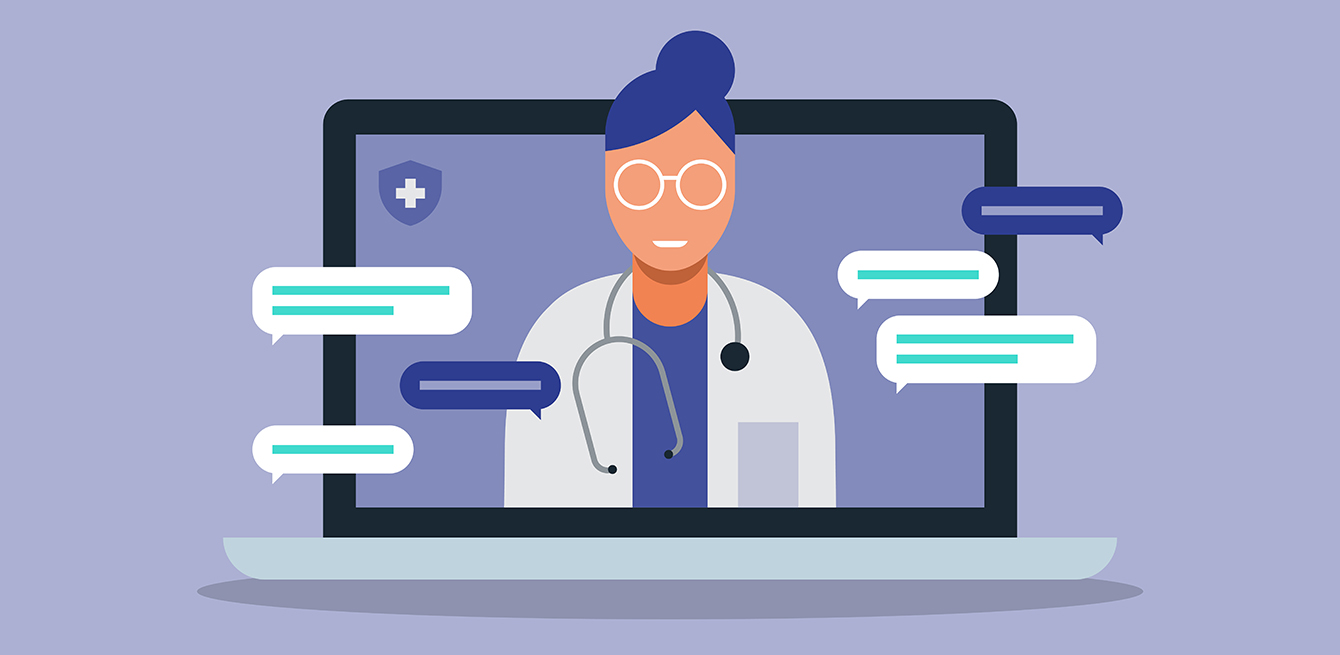
Remote medical consultations surged 70% in 2020 due to the pandemic. Despite certain advantages, they are not suitable for all medical specialisations.
Like teleworking, telemedicine is booming. Until recently, the concept was associated with the ãmedical desertsã that it serves (see ãMobile healthcare: should we share to save?ã, In Vivo No. 13) but has since spread exponentially. From prevention to patient follow-up and diagnosis, telemedicine is now everywhere. You can request medical advice via an online chat, have a video consultation, obtain electronic patient records, do virtual reality rehabilitation sessions, and more. The digital market is growing fast and with little supervision.
Member of the central committee of the Swiss Medical Association (FMH) and head of its Digitisation/Heath Department, Alexander Zimmer highlights how a range of specific services has developed in recent years, such as teleradiology (remote consultations and interpreting X-rays and ultrasound images), teledermatology (rapid remote diagnosis of skin conditions) or telecardiology (remote monitoring of patients with pacemakers). These disciplines were pioneers because they, more than others, made it possible to provide standardised high-tech services,ã the expert notes, noting that the American Telemedicine Association (ATA) defines telemedicine as the ãuse of medical information exchanged from one site to another via electronic communications to improve a patientãs clinical health statusã.
Covid-19 is obviously what pushed telemedicine into the mainstream. According to the FMH, remote consultations surged 70% between 2019 and 2020. A survey by the research institute gfs.bern published in early June found that more than a quarter (26%) of office-based physicians reported had delivered telemedicine services in the past three months.
ãThe pandemic has made it possible to take advantage of the potential of telemedicine and confirm its utility,ã says Anne-Sylvie Diezi, head of patient information at the CHUVãs Service of Communication and Audiovisual Creation. In the spring of 2020, she supervised the ãStaying connectedã project, a series of short videos filmed in different hospital services (internal medicine, intensive care, dialysis centre, etc.) to show how the nursing staff had adjusted to the situation, by implementing solutions to stay connected with patients and their loved ones, and using technology to monitor their care. ãDespite some initial apprehension, patients ended up quite satisfied with the new technology, mainly because it enabled them to stay connected.ã
During the pandemic, telemedicine was particularly useful for services dealing with chronic diseases, such as the Unit of Paediatric Diabetes, where patients play a major role in managing their day-to-day health.
Some technological tools may actually continue to be used in the future.
ãSeveral units are considering maintaining certain remote services in the medium to long term,ã says Anne-Sylvie Diezi. For example, the virtual cafûˋ available for rheumatology patients was viewed by staff as a stopgap alternative. But participants were actually delighted with the format. ãIn some cases, it was even extremely positive, including for people who are more vulnerable to infection and felt reassured about not having to use public transport.ã Although they said that seeing professionals face-to-face remains important, Anne-Sylvie Diezi found that, for the patients she met, what matters most is the connection between the patient and the healthcare provider, whatever form it takes. ãItãs not so much whether it is in-person or remote that matters, but the quality of the relationship.ã
Since the pandemic, telemedicine has therefore made it possible to avoid travel, risks of contagion and hospital overload.
That means more comfort, but also more time and sometimes more money, as patients can get a medical opinion that is just as valid as in a traditional consultation.
Sylvie Berney, chief physician at the CHUVãs General Psychiatry Service, believes that while teleconsultation can be a resource in certain circumstances, it will not replace face-to-face contact. ãIn psychiatry, teleconsultation is usually practised when it is specifically recommended, on an ad hoc basis and not on a routine basis,ã she says, indicating that in March 2020 the Department of Psychiatryãs consulting staff had to adapt quickly to this new way of doing things. The purpose of videoconferencing, in the specific context of the coronavirus, was to be able to monitor patients, especially since the pandemic would generate additional stress for people who were already struggling, she says.
A survey of 282 professionals from the CHUVãs Department of Psychiatry who have practised teleconsultation in these circumstances shows that interview quality is affected, particularly when it comes to providing a detailed analysis of the patientãs psychological state, Sylvie Berney says.
The doctor also stresses the importance of being able to ensure patient-physician confidentiality during consultations. ãIt can be a problem if a patient lives with other people and cannot physically distance for the consultation.ã
In her profession, interacting, coming together and having space where personal things are discussed and where everyone should feel safe are very important, argues Sylvie Berney. ãWe may save time with telemedicine but, when it comes down to it, the time advantage is not strong enough to make this practice standard if it isnãt specifically indicated.ã She understands its value in routine practice for people in remote areas, when it could take hours for them to get to a specialist. ãBut here, where medical services are nearby, where we work in a network system with the family, social and professional environment of each individual, in-person medicine is fundamental and precious.
Alexander Zimmer of the WFH further emphasises that for keeping medical records of teleconsultations, Swiss data protection provisions, professional secrecy, and the duty of care of physicians ãmust imperatively be guaranteedã. He believes that telemedicine still offers a range of untapped possibilities, but that neither patients nor medical professionals want it to be used exclusively. /
Examination by a health professional with advice provided remotely is considered the best option by only 3% of physicians.
An FMH survey conducted at the end of 2020 reported that 11% of the Swiss population said they would substitute in-person contact with their doctor with a video consultation.